Speeches HQ

15 Thesis Defense Introduction Sample Speeches
Defending a thesis can be one of the most nerve-wracking experiences in a student’s academic journey. It’s the moment when years of hard work, research, and dedication come together in a single presentation. The introduction sets the tone for the entire defense, making it crucial to start strong and capture the committee’s attention from the get-go.
This article presents 15 sample speeches for thesis defense introductions. Each example offers a unique approach, catering to different styles, subjects, and presentation lengths.
Whether you prefer a brief and punchy opener or a more detailed introduction, you’ll find inspiration to help you craft the perfect start to your thesis defense.
1. The Brief and Impactful Introduction
“Good morning, respected committee members. Today, I stand before you to present my research on the effects of social media on teenage mental health. Over the past three years, I’ve surveyed over 5,000 teenagers, analyzed countless studies, and collaborated with leading psychologists to uncover the hidden impacts of our increasingly connected world. What I’ve found might surprise you and change how we view the role of technology in young lives.”
— END OF SPEECH —
Commentary: This short introduction quickly grabs attention by hinting at surprising findings. It’s ideal for presentations where time is limited or when you want to leave more room for the main content.
2. The Personal Journey
“Hello everyone. Six years ago, I watched my grandmother struggle with Alzheimer’s disease. Her battle inspired me to dedicate my life to understanding and combating this devastating condition. My thesis explores a novel approach to early Alzheimer’s detection using artificial intelligence and brain imaging. This research has been a deeply personal journey, and I’m excited to share my findings with you today.”
Commentary: This medium-length introduction uses a personal story to connect emotionally with the audience. It works well for research topics with a human impact, especially in medical or social sciences.
3. The Historical Context Setter
“Distinguished committee members, esteemed colleagues. The search for extraterrestrial life has captivated humanity for centuries. From ancient stargazers to modern SETI programs, we’ve peered into the cosmos, hoping to find signs that we’re not alone.
My thesis builds on this rich history, proposing a new method for detecting biosignatures on exoplanets. By combining spectroscopy with machine learning, we may finally be on the brink of answering one of humanity’s oldest questions: Are we alone in the universe?”
Commentary: This longer introduction sets the historical context for the research. It’s suitable for topics that benefit from a broader perspective, especially in fields like astronomy, history, or evolutionary biology.
4. The Problem-Solution Opener
“Thank you all for being here today. Our world faces an unprecedented challenge: feeding a growing population while combating climate change. Traditional agriculture struggles to meet these dual demands.
My thesis presents a solution: vertical farming powered by renewable energy. This innovative approach could revolutionize food production, reduce water usage by 95%, and slash carbon emissions. Today, I’ll walk you through the technology, economics, and potential global impact of this game-changing concept.”
Commentary: This medium-length introduction clearly states a problem and immediately presents the thesis as a solution. It’s effective for research that addresses pressing real-world issues, particularly in fields like environmental science, engineering, or urban planning.
5. The Interdisciplinary Approach
“Good afternoon, respected committee. The boundaries between academic disciplines are blurring, and my research sits at one such intersection. By combining principles from cognitive psychology, computer science, and linguistics, I’ve developed a new framework for natural language processing in AI. This interdisciplinary approach has led to breakthroughs in machine comprehension of context and subtext, potentially transforming how we interact with artificial intelligence.”
Commentary: This introduction highlights the interdisciplinary nature of the research. It’s particularly suitable for theses that bridge multiple fields or apply techniques from one discipline to solve problems in another.
6. The Controversy Addresser
“Respected committee members, I appreciate your time today. Gene editing is a topic that sparks heated debate and ethical concerns. My thesis dives into this controversy, examining the potential of CRISPR technology to eliminate hereditary diseases.
Through extensive laboratory work and ethical consultations, I’ve developed a framework for responsible gene editing that balances scientific progress with moral considerations. Today, I’ll present my findings and propose guidelines for the future of this powerful technology.”
Commentary: This longer introduction acknowledges the controversial nature of the research topic. It’s suitable for theses dealing with ethically complex subjects, showing awareness of broader implications while asserting the value of the research.
7. The Data-Driven Hook
“Hello everyone. Did you know that we produce 2.5 quintillion bytes of data every day? Yet only 0.5% of that data is ever analyzed. My thesis tackles this big data challenge, presenting a new algorithm for real-time data processing and analysis.
By testing this algorithm on massive datasets from social media, IoT devices, and financial markets, I’ve demonstrated its potential to uncover hidden patterns and predict trends with unprecedented accuracy.”
Commentary: This introduction uses a striking statistic to grab attention before explaining the thesis. It’s effective for data-heavy research, especially in fields like computer science, data science, or quantitative finance.
8. The Practical Application Emphasis
“Good morning, distinguished committee. In emergency situations, every second counts. My thesis focuses on optimizing emergency response systems using machine learning and real-time traffic data.
By analyzing patterns from past emergencies and current road conditions, this system can reduce response times by up to 30%. Today, I’ll demonstrate how this technology works and share results from pilot programs in three major cities.”
Commentary: This medium-length introduction emphasizes the practical, real-world application of the research. It’s ideal for applied research in fields like engineering, urban planning, or public health.
9. The Grand Challenge Approach
“Esteemed committee members, thank you for your presence. Climate change threatens our planet’s future, and addressing it requires innovative solutions. My thesis contributes to this crucial effort by introducing a new method for carbon capture and storage.
Using a combination of novel materials and process engineering, this approach could sequester carbon dioxide at a fraction of the current cost. Today, I’ll walk you through the science, the scalability, and the potential global impact of this technology.”
Commentary: This introduction frames the research within the context of a major global challenge. It’s suitable for theses addressing big-picture issues, particularly in environmental science, energy technology, or related fields.
10. The Paradigm Shift Proposition
“Distinguished committee, colleagues, and guests. For decades, we’ve approached artificial intelligence from a computational perspective. My thesis challenges this paradigm, drawing inspiration from neurobiology to create AI systems that mimic the brain’s plasticity and adaptability.
This bio-inspired approach has led to AI models that can learn and adapt in ways previously thought impossible. Today, I’ll present the theory behind this new paradigm, demonstrate its practical applications, and discuss its implications for the future of AI and cognitive science.”
Commentary: This lengthy introduction proposes a fundamental shift in thinking about the research field. It’s appropriate for groundbreaking research that challenges established theories or methodologies, particularly in rapidly evolving fields like AI, biotechnology, or theoretical physics.
11. The Technological Evolution Perspective
“Good morning, esteemed committee. From the first stone tools to modern smartphones, technology has shaped human evolution. My thesis explores the next frontier: brain-computer interfaces.
By studying the integration of neural implants with the human brain, I’ve uncovered new possibilities for treating neurological disorders and enhancing cognitive abilities. Today, I’ll present my findings on the long-term effects of these interfaces and discuss the ethical considerations of this emerging technology.”
Commentary: This introduction places the research in the context of human technological progress. It’s suitable for theses in neuroscience, bioengineering, or related fields that explore cutting-edge technologies with far-reaching implications.
12. The Local Impact Focus
“Hello, respected committee members. While global issues often dominate headlines, local challenges can have profound effects on communities. My thesis examines the impact of gentrification on low-income neighborhoods in our city.
Through extensive fieldwork, interviews, and data analysis, I’ve tracked changes in housing prices, local businesses, and community demographics over the past decade. My research reveals surprising patterns and offers policy recommendations to promote equitable urban development.”
Commentary: This medium-length introduction focuses on a local issue with broader implications. It’s ideal for research in urban studies, sociology, or public policy that examines specific communities or regions.
13. The Philosophical Quandary
“Distinguished committee, thank you for being here. Since Descartes pondered the nature of consciousness, philosophers and scientists have grappled with the concept of self-awareness. My thesis bridges philosophy and neuroscience, proposing a new framework for understanding consciousness based on information integration theory.
By combining philosophical reasoning with cutting-edge brain imaging techniques, I’ve developed a testable model of conscious experience that could reshape our understanding of the mind.”
Commentary: This introduction frames the research as an exploration of a long-standing philosophical question. It’s suitable for interdisciplinary work that combines humanities and sciences, particularly in fields like cognitive science or philosophy of mind.
14. The Economic Paradigm Challenger
“Good afternoon, respected committee. Classical economic theory assumes rational actors making optimal decisions. Yet, reality often deviates from this ideal. My thesis challenges traditional models by incorporating insights from behavioral psychology and neuroscience.
Using a combination of laboratory experiments and real-world data, I’ve developed a new economic model that better predicts consumer behavior and market trends. This research has significant implications for policy-making, marketing, and our understanding of human decision-making.”
Commentary: This introduction challenges established theories in a field. It’s appropriate for research that brings new perspectives to traditional disciplines, especially in economics, psychology, or related social sciences.
15. The Artistic Innovation Showcase
“Hello everyone. Art has always pushed the boundaries of human expression, and digital technology is opening new frontiers. My thesis explores the intersection of virtual reality and interactive storytelling. I’ve developed a new platform that allows users to step inside stories, influencing narratives through their actions and emotions.
This technology blends elements of gaming, cinema, and literature to create a truly immersive storytelling experience. Today, I’ll demonstrate this platform and discuss its potential impact on entertainment, education, and therapy.”
Commentary: This introduction highlights innovation in a creative field. It’s suitable for theses in digital arts, interactive media, or related areas that combine technology with creative expression.
These sample speeches offer a variety of approaches to introducing your thesis defense. The key is to choose an opening that fits your research, your style, and your audience. Remember, your introduction sets the stage for your entire presentation, so make it count.
As you prepare for your defense, practice your introduction until it feels natural and confident. Your opening words should convey your passion for the subject and the significance of your research. With the right introduction, you’ll capture your committee’s attention and set yourself up for a successful defense.
Good luck with your thesis defense! Your hard work and dedication have brought you to this moment. Now’s your chance to shine and share your valuable contributions with the academic community.
- Slidesgo School
- Presentation Tips
How to Start a Thesis Defense Presentation

After months and years of hard work, the moment to wrap things all up is finally here—your thesis defense presentation.
Whether you’re pursuing a master’s degree or doctorate, it’s the final step to that much-deserved achievement.
A thesis defense requires a lot of prior research and preparation. And as important as its content is, so is how you present it because a stunning design with clear data and text hierarchy plays an immense role in comprehension.
In this article, we’ll explore how you make your thesis defense .
The organization is the key to success. Establishing some previous steps before any project or work is essential for the result to be very positive. And the defense of a thesis could not be less.
Below, we will develop all the necessary steps to make a thesis defense presentation and we will give you some tips on how to carry them out.
How to Make an Amazing Presentation
Defining the concept of your thesis presentation, structuring your thesis defense presentation, how do you welcome the audience, tell them why you did this thesis, go into the content by explaining your thesis part by part, how to end the defense of the thesis.
After a long time of research and study, the content of your thesis is ready. Now, you have to find the best way to reflect all that effort behind your work. The information comes across more clearly if you use a visual format, as it attracts the attention of the audience. To present your thesis information in a clear, concise, and ultimately amazing way, you can use one of our unique thesis defense templates , available at Slidesgo.
As an example, in this article, we are going to use the Ecology Thesis template . With it, we will show you what to include in your presentation and how to make an attractive design.
After choosing the Google Slides and PowerPoint template that best suits the needs and subject matter of your thesis, it is time to define an overarching concept.
This is the main theme on which your designs are based. It must be relevant to your thesis as its purpose is to guide your selection of colors, typography, images, style, etc.
These must be portrayed in a way that supports the main message of your slides and should be aligned with your concept both visually and sociologically.
Once you have defined the concept, you will have to move on to the next step: structuring the content of your thesis. A good structure will show that there is a good organization behind the work, but most importantly: it will highlight your content.
In this article, we are going to show you a structure that could be a good example of how to structure a thesis, but you can adapt it to what your specific content requires.
Before you begin your thesis defense, you should welcome your audience. A good presentation will make you connect with your audience, which will result in more general interest in your work.
Use an appropriate language register (avoid informal language), but be approachable and natural.
"Welcome to the thesis defense on [the title of your thesis]". Next, introduce yourself with your name and give a short description of your background and occupation.
Don't forget to say “thank you for attending!”
To continue establishing that connection with your audience, explain the reasons that led you to do this thesis. Tell the professional reasons, and you can even say some personal ones, which will denote closeness, and your audience will appreciate it.
Now it's time to go into the content of the thesis ! After these preliminary steps, which are just as important as the thesis itself, it is time to explain part by part the structure (which you had previously established). We are going to propose a structure for your project, but the final decision is always yours!

First impressions are very important. Because your title page is the very first thing viewers see, it must be striking and impactful. It also sets the stage for the rest of your slides.
In one glance, the following should be established:
- Thesis defense topic
- Design style
For instance, the ecology thesis’s title page uses illustrations of a natural landscape to represent the topic of nature and a striking shade of blue to set the tone.
The sans serif font used depicts clean-cut typography and style and the thesis topic is written in large and bold typography, which draws attention to it immediately.
.jpg)
Right after your title page, include an introduction slide to provide more details about your topic.
This means explaining what you hope to answer with your research, its importance to your field, and why you chose it.
Continue to incorporate design elements relevant to your concept. This example has done just that by using a different natural landscape and including animals. For coherence, stick to the same typography and style throughout your presentation.
.jpg)
The aim of the literature review slide is to illustrate your knowledge of your thesis topic and any relevant theories.
Walls of text kill a design. For clarity, we recommend presenting this with bullet points. Each one should be short and sweet and only touch on the basics; you can elaborate on them in your speech.
Don’t forget to be consistent with your design. In our example, we’ve maintained the tone of blue chosen and added illustrations of leaves in the far corners of the slide.
Also, address similar research that has been done. This is to showcase your topic’s originality and, if relevant, how it’s different and/or an improvement from previously done research.
.jpg)
This is one of the most important parts of a thesis defense presentation.
It allows your viewers to assess the rationality and validity of your approach and consequently, the accuracy of your results.
A great methodology slide explains the what , how, and why :
- What method did you use for your research
- Why did you choose it
- How did you conduct it
Because this part of your thesis will be rather technical, the most effective way to aid understanding is by using graphics like charts and tables.
.jpg)
Keep text to a minimum to avoid drawing attention away from the graphics. If there is a text that must absolutely be included, consider using bullet points and keep them short.
Don’t forget to maintain color, style, and typography coherence.
.jpg)
The results slides are easily the most quantitative part of a thesis defense.
Here, your aim is to simply introduce your findings. Select the most impactful data and highlight them here.
Just as with methodology, use graphics like charts, tables, and graphs to portray the data in a clear way. And, once again, try not to write too much text. Let the visual content do the talking .
.jpg)
After you’ve introduced your data, the next step would be to help your audience make sense of it. That means understanding what it means in the context of your thesis research topic and your discipline.
Simply put, you should answer the question: What do the numbers mean?
The best way to approach this would be to do it as if you were creating an infographic .
Illustrations like icons are a quick and simple way to represent your message. It also reduces the amount of text on your slide, which makes the information much more digestible.
For a balanced thesis presentation, you should also address any outliers and anomalies.
To quote bestselling author Robin Sharma, “Starting strong is good. Finishing strong is epic.”
That’s exactly what to aim for in your conclusion.
Provide an overview of your thesis topic and remind your audience what you set out to answer with your research. In our example, we’ve used three icons accompanied by a short title and text.
.jpg)
Following that, reiterate the important points of your research results you want your audience to take away from your thesis defense presentation.
You can do so by expanding the next slide to have more icons and points, for example.
.jpg)
Don’t forget to address any shortcomings and limitations in your approach and extra points for suggesting possible improvements for future research.
We are going to give you a little tip to make your thesis defense a success. You can combine your defense with good public speaking techniques. Take a look at our article "How to become a great speaker" .
We hope this article has been of great help, have you already seen our templates to make the presentation of your thesis ? Choose the one that best suits your needs, we are sure that one of them will go perfectly with your thesis presentation!
Good luck from Slidesgo.

Do you find this article useful?
Related tutorials.

Top 8 About me presentation templates for going back to school
With the new school year just around the corner, we are all gearing up for those first few days of class. As teachers, one of the most enjoyable ways to break the ice and create a welcoming atmosphere is through an engaging about me presentation. It’s a great way to introduce yourself to your students or help them share their own stories. A well-crafted template can make this process meaningful… and fun, too!In this post, you will find the top 8 about me presentation templates for free that are simply perfect for the back-to-school season. These templates are available to help...

Make school fun from day one with Disney and Pixar templates
The shine of new books, the smell of fresh notes, the clink of the pens in your pencil case, the sound of the bell, and the feel of desks… Back-to-school is here, tingling all your senses! But even if this isn’t your first rodeo in the educational arena, there’s an extra flutter in your stomach this time around. Can you feel it? Because back to school is back to fun, and our +100 templates featuring Disney and Pixar characters are just what you need to make it a blast.This school year, get ready to renew and empower your teaching with Slidesgo’s Disney and...

Free printable coloring pages in PDF for back to school
As the new school term approaches, excitement, and anticipation fill the air. One fantastic way to channel this energy is through free back to school coloring pages! These aren’t just for fun—printable coloring pages in PDF format can help kids develop fine motor skills, enhance their creativity, and provide a calming activity amidst the bustle of back-to-school preparations. These engaging materials offer a wonderful opportunity for children to express themselves and ease into kindergarten or preschool with joy and confidence. Whether it's during a break from homework or a rainy day activity, printable coloring pages are a perfect blend of entertainment and education.

SmartStart educational webinar: Smart moves for smarter teaching
Feeling those post-holiday blues sneaking up is a common tale. According to experts, nearly a third of us mourn the end of summer’s leisure. But you’re not on that page—you’re part of the enthusiastic majority, eager to make this academic year the most exciting one yet thanks to some fresh, energized tools at your disposal from Slidesgo.If you’re on the hunt for groundbreaking ideas to get the best out of our resources, SmartStart is the jolt of energy you need. This vibrant online event is where passion for education meets cutting-edge technology. Packed with insightful talks and real-world solutions from seasoned educators, SmartStart is all about empowering...
Thesis Defense: Presentation, Structure, Questions and Sample Speech
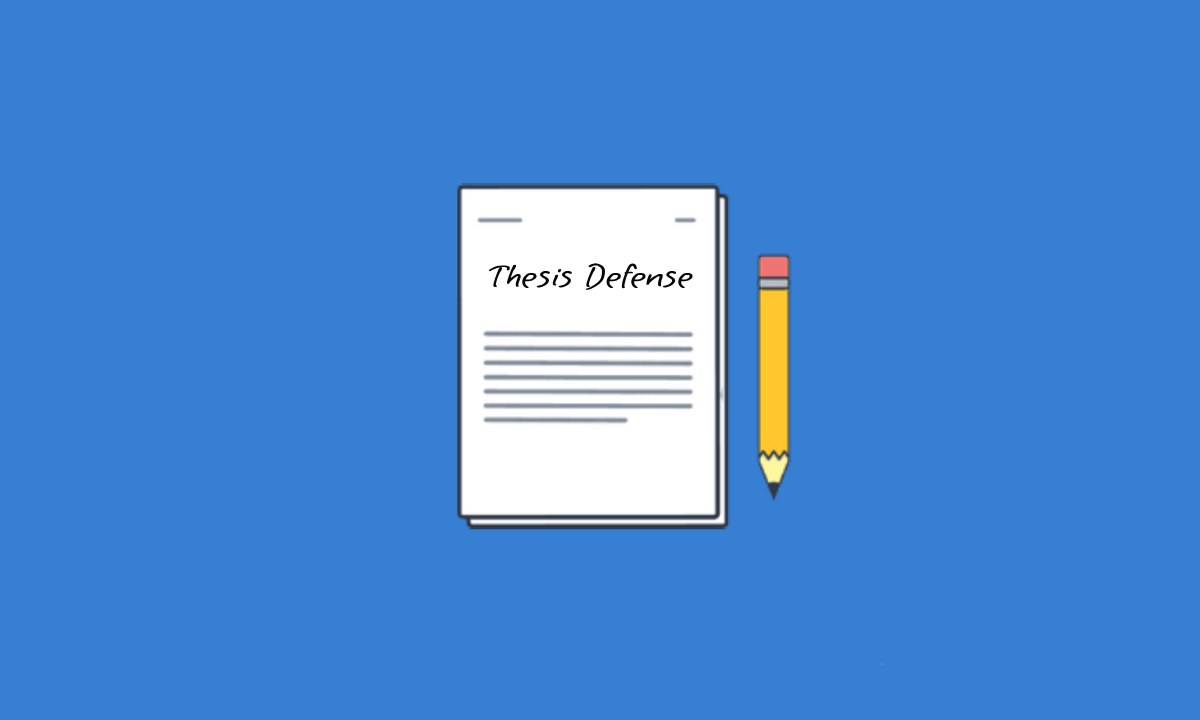
What is Thesis Defense?
A thesis defense, also known as a viva voce or oral defense, is an academic event where a student presents their research work and findings to a panel of experts in their field. It typically marks the culmination of their graduate studies, especially at the master’s or doctoral level.
Table of Contents
The purpose of the thesis defense is to assess the student’s mastery of their subject area, their ability to conduct independent research, and their capacity to defend their ideas and conclusions in an academic setting. If the defense is successful, the student may be granted their degree.
How to Do a Thesis Defense Presentation?
Preparing for a thesis defense presentation involves several key steps to ensure that you effectively communicate your research and findings to your audience. Here’s a general guide on how to do it:
Know your audience:
Understand who will be attending your defense. This will help you tailor your presentation to their level of expertise and interests.
Create a clear outline:
Structure your presentation logically with a clear introduction, methods, results, discussion, and conclusion. Make sure each section flows smoothly into the next.
Develop engaging slides:
Create visually appealing slides that support your key points. Use bullet points, graphs, charts, and images to illustrate your findings and make your presentation more engaging. Keep text to a minimum and focus on conveying your main ideas concisely.
Practice your delivery:
Rehearse your presentation multiple times to become familiar with the material and improve your delivery. Practice speaking clearly and confidently, and pay attention to your pace and tone of voice.
Anticipate questions:
Prepare for potential questions that you may receive during the Q&A session. Think about the strengths and weaknesses of your research and be ready to defend your work.
Seek feedback:
Ask your advisor, peers, or colleagues to review your presentation and provide feedback. Incorporate their suggestions to improve the clarity and effectiveness of your presentation.
Stay focused during the defense:
On the day of your defense, remain calm and composed. Start your presentation with a brief overview of your research and objectives. Speak clearly and confidently, and maintain eye contact with your audience. Be prepared to answer questions thoughtfully and respectfully, even if they are challenging.
Conclude with a summary:
Wrap up your presentation with a summary of your key findings and conclusions. Thank your audience for their time and attention, and invite further discussion or questions.
By following these steps and thoroughly preparing for your thesis defense presentation, you can effectively showcase your research and demonstrate your expertise in your field.
Thesis Defense Structure:
Structuring your thesis defense effectively is crucial for conveying your research findings and engaging your audience. Here’s a suggested structure for your defense presentation:
Introduction (5-10 minutes):
- Start with a brief introduction to yourself, including your name, academic program, and research topic.
- Provide an overview of your presentation structure to guide your audience.
- Clearly state your research objectives and the significance of your study.
Background and Literature Review (5-10 minutes):
- Summarize the background information and context of your research topic.
- Review relevant literature and theories that informed your research.
- Highlight gaps or unresolved issues in the existing literature that your research addresses.
Research Methodology (10-15 minutes):
- Describe your research design, including the research approach (qualitative, quantitative, or mixed methods), data collection methods, and sampling strategy.
- Discuss any ethical considerations and measures taken to ensure the validity and reliability of your data.
- Explain how you analyzed the data and interpreted the results.
Results and Findings (15-20 minutes):
- Present your main research findings, organized according to your research questions or hypotheses.
- Use visual aids such as graphs, charts, or tables to illustrate key findings.
- Provide a clear and concise interpretation of the results, emphasizing their relevance to your research objectives.
Discussion and Implications (15-20 minutes):
- Analyze and interpret your findings in relation to existing literature and theoretical frameworks.
- Discuss the implications of your findings for theory, practice, and future research.
- Address any limitations or constraints of your study and their impact on the validity and generalizability of your results.
Conclusion (5-10 minutes):
- Summarize the main conclusions of your research and how they contribute to the field.
- Reflect on the significance and broader implications of your study.
- Highlight any recommendations for future research or practical applications.
Questions and Answers (15-30 minutes):
- Invite questions from the examining committee and audience members.
- Respond to questions thoughtfully, demonstrating your knowledge and understanding of your research.
- Be prepared to defend your research methodology, findings, and interpretations.
Closing Remarks (2-5 minutes):
- Thank your audience, examining committee, and advisor for their time and feedback.
- Express gratitude to any collaborators, funders, or participants who contributed to your research.
- Reiterate the importance of your research and your enthusiasm for future endeavors in the field.
- Adhering to this structure will help you deliver a coherent and engaging thesis defense presentation, effectively communicating the significance of your research and demonstrating your expertise in your field.
Common Thesis Defense Questions
During a thesis defense, you can expect a wide range of questions from your examining committee. These questions typically cover various aspects of your research, methodology, results, and conclusions. Here are some common thesis defense questions:
Introduction and Background:
- Can you provide an overview of your research topic ?
- What motivated you to pursue this research?
- How does your research contribute to the existing body of knowledge in your field?
Research Methodology:
- What research methods did you use, and why?
- Can you justify your choice of research design?
- How did you ensure the validity and reliability of your findings?
Results and Analysis:
- What were the main findings of your study?
- Can you explain any unexpected results?
- How do your results support or challenge existing theories or hypotheses?
Discussion and Interpretation:
- What are the implications of your findings?
- How do your results fit into the broader context of your field?
- What are the limitations of your study, and how do they affect the interpretation of your results?
Conclusion and Future Directions:
- What are the main conclusions of your research?
- How do you propose to build on this research in the future?
- Are there any unanswered questions or areas for further investigation?
Critical Thinking and Reflection:
- What alternative explanations or interpretations did you consider?
- How did you address potential biases or limitations in your study?
- What would you do differently if you were to conduct this research again?
Contributions and Significance:
- What is the significance of your research in the broader context of your field?
- How does your research advance our understanding of the topic?
- What practical applications or implications does your research have?
Personal Reflection and Growth:
- What did you learn from conducting this research?
- How has this research influenced your perspective or career trajectory?
- What advice would you give to other researchers working in this area?
These are just examples, and the actual questions you receive may vary depending on your specific research topic, methodology, and the interests of your examining committee.
Thesis Defense Tips:
Below are some tips to help you ace your thesis defense:
Know Your Limits: While it’s important to be well-prepared, remember that you don’t need to know everything. Focus on your research and be ready to discuss it thoroughly, but don’t feel like you have to be an expert in every tangential topic.
Stay Organized: Keep all your materials organized and easily accessible. This includes your presentation slides, notes, research papers, and any other relevant documents. Being organized will help you feel more confident and reduce stress on the day of your defense.
Practice Answering Questions: Enlist the help of friends, family, or colleagues to conduct mock defense sessions. Practice answering both expected and unexpected questions to improve your ability to think on your feet.
Pay Attention to Body Language: Your body language can convey confidence and professionalism. Maintain eye contact with your audience, stand tall, and avoid fidgeting. Confident body language can help you feel more assured and make a positive impression on your committee.
Be Concise: When answering questions, aim for clarity and conciseness. Avoid rambling or going off on tangents. If you need a moment to gather your thoughts, it’s okay to pause briefly before responding.
Set Time Limits: Practice your presentation within the allotted time frame. Aim to cover all key points without rushing or exceeding the time limit.
Respectful Engagement: Even if you disagree with a committee member’s feedback or question, remain respectful and professional in your response. Engage in a constructive dialogue rather than becoming defensive.
Dress Professionally: Choose attire that reflects the formality of the occasion. Opt for professional attire such as business casual or formal wear, depending on the norms of your academic institution.
Practice Relaxation Techniques: Incorporate relaxation techniques such as deep breathing, visualization, or mindfulness meditation to manage pre-defense nerves. Practice these techniques regularly to build resilience against anxiety.
Stay Hydrated and Rested: Ensure you get a good night’s sleep before your defense and stay hydrated on the day of. Being well-rested and hydrated can help you maintain focus and clarity during the defense.
Expect the Unexpected: No matter how well-prepared you are, unexpected challenges may arise during your defense. Stay adaptable and maintain a positive attitude, even if things don’t go exactly as planned.
Review Previous Defenses: If possible, attend other students’ thesis defenses to get a sense of what to expect. Observing how others handle the process can provide valuable insights and help alleviate some of your own apprehensions.
Believe in Yourself: Finally, have confidence in your abilities and the work you’ve done. Remember that your thesis defense is a culmination of years of hard work and dedication. Trust in your preparation and trust in yourself to succeed.
By following these tips and staying focused, you’ll be well-equipped to tackle your thesis defense with confidence and poise.
Thesis Defense Introduction Speech Sample
Here’s a sample introduction speech for a thesis defense:
Good [morning/afternoon/evening], esteemed members of the examining committee, respected faculty, fellow students, and guests. My name is [Your Name], and it is with great pleasure and a hint of nervous excitement that I stand before you today to present and defend my thesis entitled “[Your Thesis Title].”
Before I delve into the details of my research, I would like to take a moment to express my sincere gratitude to everyone who has supported me throughout this journey. Firstly, I am deeply thankful to my advisor, [Advisor’s Name], for their invaluable guidance, encouragement, and unwavering support. Their expertise and mentorship have been instrumental in shaping the direction and quality of my research.
I would also like to extend my gratitude to the members of my examining committee for their time and expertise in evaluating my work. Your insightful feedback and constructive criticism have been indispensable in refining my thesis and strengthening its scholarly merit.
Furthermore, I am indebted to my family and friends for their unwavering belief in me and their unconditional support, especially during the challenging moments of this academic endeavor. Your encouragement has been a constant source of motivation, and I am profoundly grateful for your presence here today.
Now, turning to the essence of my thesis, [Your Thesis Title], I embarked on this research journey with the aim of [briefly state your research objectives]. In the course of my investigation, I have explored [briefly mention the key aspects or themes of your research].
Throughout this presentation, I will outline the background and context of my research, elucidate the methodology employed, present the main findings, discuss their implications, and conclude with reflections on the significance of my research contributions.
I am honored to have the opportunity to share my research findings with you today and engage in a scholarly dialogue on the subject matter. I am eager to receive your feedback, insights, and questions, which will undoubtedly enrich the discourse and contribute to the advancement of knowledge in our field.
Without further ado, I invite you to join me on this intellectual journey as we explore the intricacies and implications of [Your Thesis Title]. Thank you for your attention, and I look forward to our fruitful discussion.
Related Posts
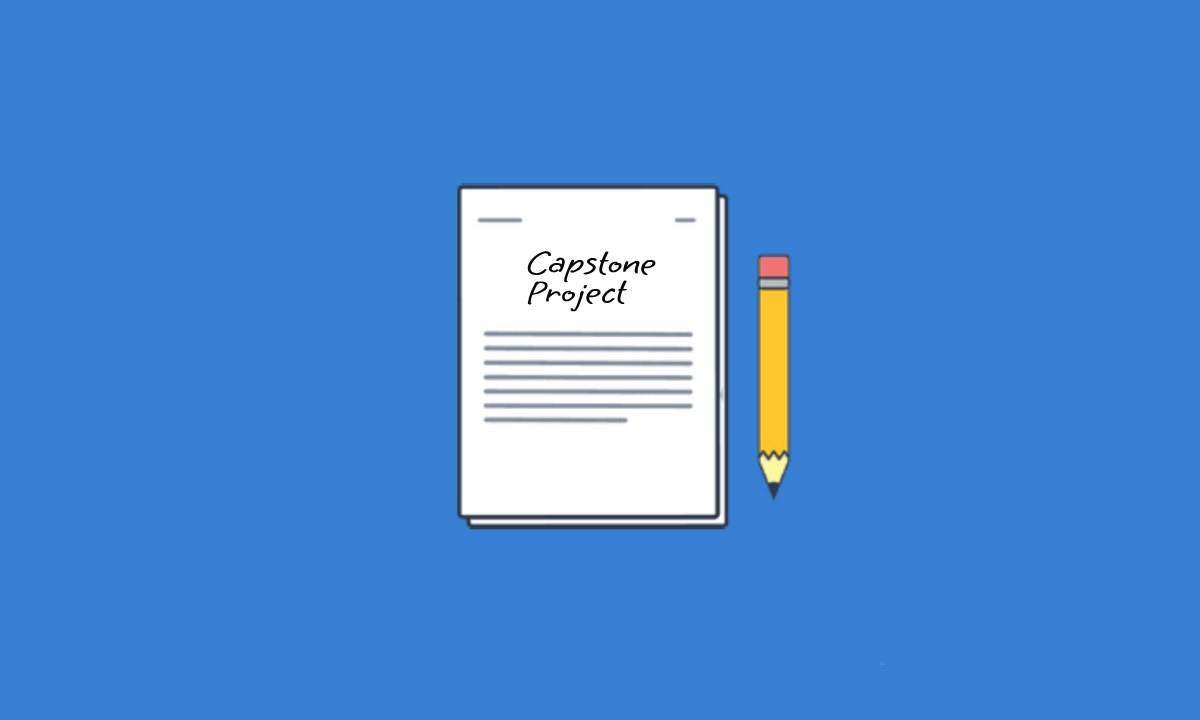
Capstone Project: Format, Ideas & Proposal Example

Peer Review: Types, Format, Process & How-To Guide
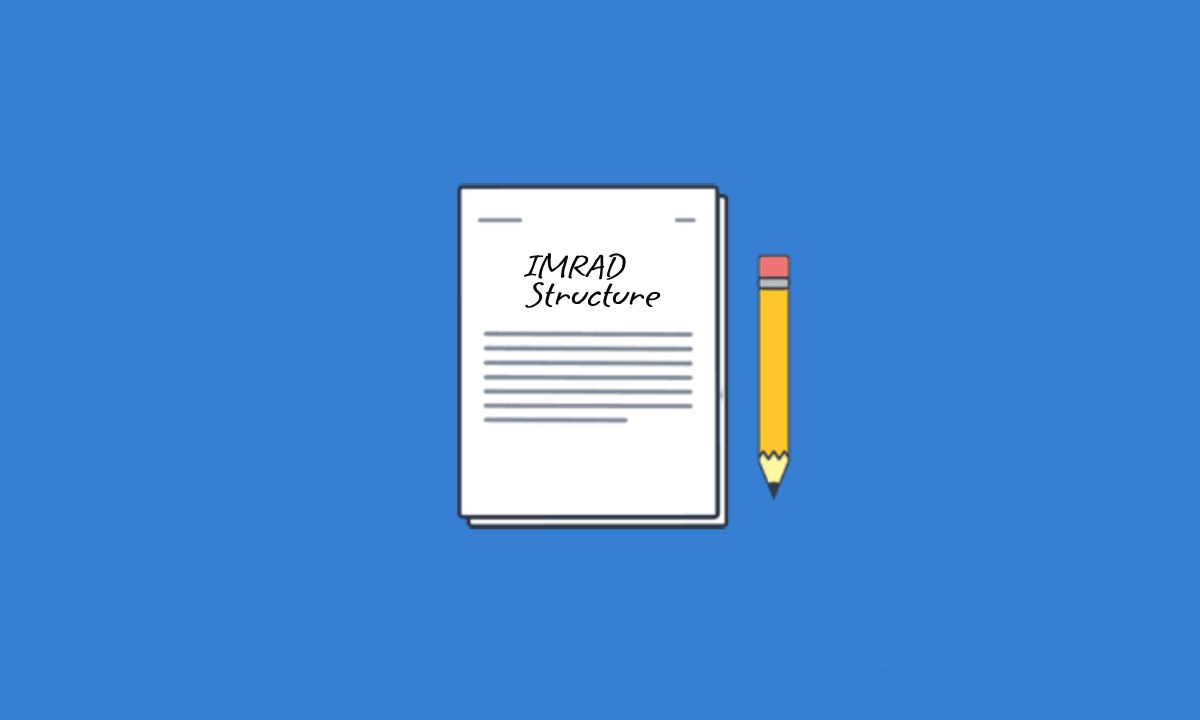
IMRAD: Format, Purpose and Structure Example
Home Blog Presentation Ideas How To Do a Proper Thesis Defense Using the Right PowerPoint Presentation
How To Do a Proper Thesis Defense Using the Right PowerPoint Presentation
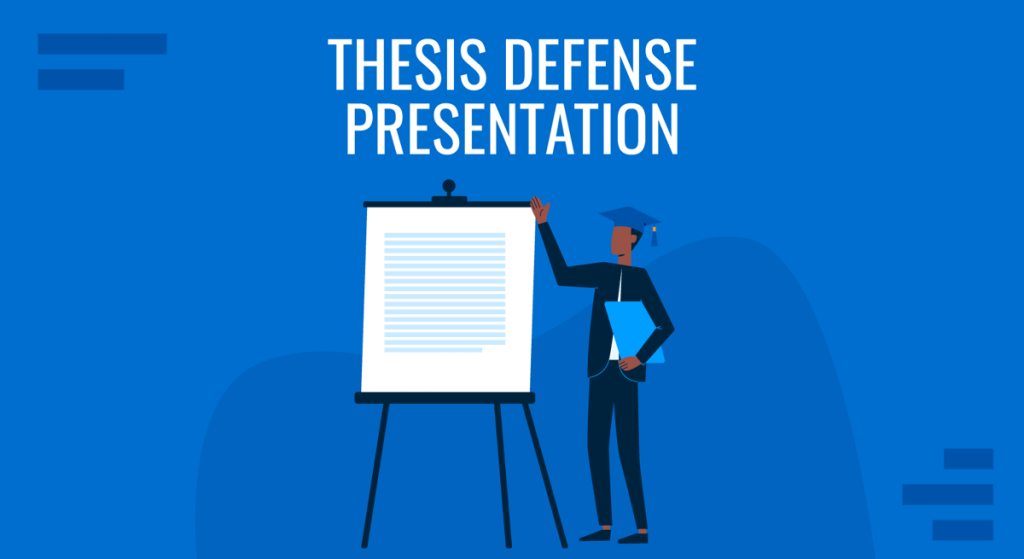
Writing a thesis is stressful, but preparing an oral defense can be even more painful. But it doesn’t have to be; with proper preparation and a good presentation, you will be able to better equip yourself comes time to present your thesis defense.
But what makes a good thesis defense?
A proper presentation helps you with your thesis defense because it helps you capture the panels’ attention and gives you cues and reminders on what to say as well.
It also helps keep your data organized while visually looking good and provides a flow structure for the rest of your presentation.
In today’s article, we will be giving you The Right PowerPoint Templates for Your Thesis Defense and a powerful outline composed of best practices and layouts specifically designed to help you defend your thesis in both written and oral presentations.
In the next segments of this article, we’ll walk you through the most feasible process on how to ace this kind of presentation.
Let’s dive into the outline of what makes a great thesis defense.
Thesis Defense Overview
Similarities.
- Type of Degree
Thesis and Dissertation Distinction Varies on Location
Three most common thesis defense myths, how to use chatgpt to structure your thesis.
- Introduction
- Literature Review
- Methodology
- Acknowledgements
- Questions and Answers
- Contact Information
- Tips During Your Oral Defense
- More Quick Tips on How to Present
A thesis defense is composed of two parts – a thesis and a defense.
The thesis, according to Grad School Hub , represents a student’s collective understanding of his or her program and major.
Universities often include a thesis in every course as one of the final requirements to earn a particular graduate or postgraduate degree.
The thesis, however, isn’t just a mere requirement.
It helps the students to grow out of their shell from their respective discipline and give them the opportunity to present all the findings of their study.
Moreover, some people think a thesis is just a long essay, but it’s not. Unlike an essay, a thesis needs to assert something.
This can be considered one of the most crucial research documents that a student makes during their academic schooling .
On the other hand, defense is the presentation of the pieces of evidence to support and prove your research.
It’s the most essential part of the thesis process.
Your presentation has to be prepared to answer questions from members of the committee and any other panel present, and it’s your job to convince them and defend your thesis with ample proof.
Prior to presenting, you have to carefully determine what appropriate evidence should be presented before the panel, depending on what thesis you have to defend.

Thesis and Dissertation Distinguished
A thesis or dissertation is usually required to complete a particular graduate degree. These two words are often used interchangeably by most students when referring to research studies.
But while being almost similar in format or structure, it’s worth noting that they have significant differences that set them apart from each other.
The very reason why thesis and dissertation are treated the same is that these two are both extensive papers. Not just merely long essays like what others are claiming.
Both of these papers are extensive. This is why students are given ample time, usually the entire last semester of the last year of study, to complete all the requirements and finally acquire their degree.
With regards to structure, both papers are very similar with few differences.
Differences Between Thesis and Dissertation
One of the significant differences between the two is to whom the paper is assigned. A thesis is usually required for those students earning a bachelor’s or master’s degree. While a dissertation is for those, who want to obtain a doctorate degree.
However, not all students taking a master’s degree are required to make a thesis. Prior to their enrollment, they have been given a choice of whether they’ll go for a non-thesis program or with a thesis.
Those who have a plan to escalate their degree to a doctorate eventually should take the path of a thesis. This is to prepare themselves for a more extensive dissertation requirement as doctorate students. Otherwise, they will be only limited to earning a master’s degree.

But above all, the most significant difference between the two papers is the purpose for which it is written.
A thesis, like what has been mentioned above, is being done by students obtaining a bachelor’s or master’s degree and has the purpose of testing their understanding of the discipline they’re engaged with.
A thesis is focused on obtaining technical expertise.
On the other hand, a dissertation is made for students to come up with an original study that other researchers haven’t already studied.
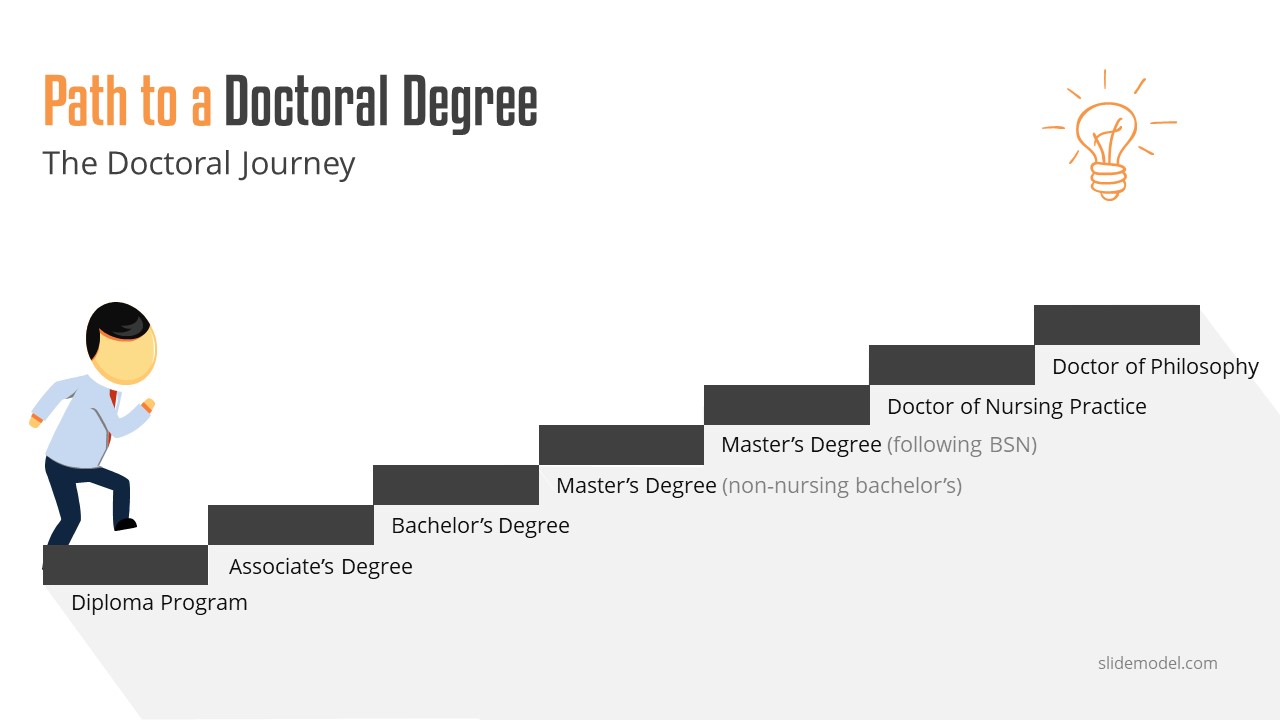
USA: In the United States of America, they consider a thesis shorter than a dissertation. In fact, aside from being a requirement to graduate in college, a thesis is now also inculcated in master’s degree programs. And since the dissertation is more extensive, the thesis is treated as preliminary in gaining a doctorate degree.
Europe: The distinction between the two papers is almost opposite to that of the USA. In Europe, a dissertation is only a broader research study from a post-graduate program and not the making of original research. Instead, educational systems in the said continent treat the doctoral thesis as a more elaborate paper writing.
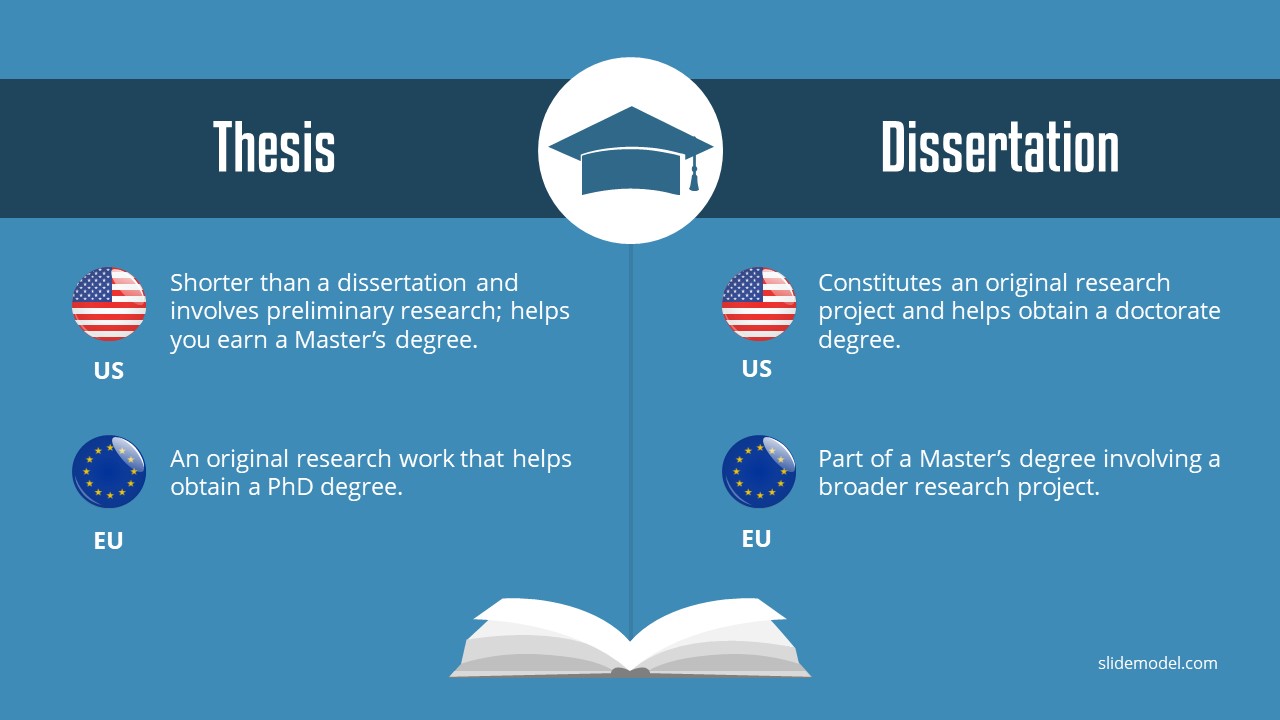
The difference between a thesis and a dissertation might not seem that big, but it’s important that we know what makes them different.
If your upcoming defense gives you pressure and uneasiness, it could be cause you are not sure what to expect. Today we will dispel three common thesis defense myths that will help you be more confident in your presentation.
“Answer all the questions correctly. Otherwise, your thesis won’t get approved.”
You are expected to have a focus on your research.
That being said, you have to study each part of your thesis, every detail, and even your sources.
You have to study and practice how to effectively deliver your presentation.
But don’t overthink to the extent that you’re stressing yourself to know everything perfectly.
Don’t overstress if you can’t answer one of the questions, this doesn’t necessarily mean the committee won’t approve your thesis.
You should know that research is a continuous study.
So you should expect that your committee will always be able to find a gap in your study to fill in future related research .
So in times you don’t exactly know the answer, admit it, and you’ll learn as they give their sides or suggestions.
Making up an answer will only displease your committee, so it’s to be upfront, honest, and transparent.
“The committee is just there to find holes in your study. They don’t care about you.”
One of the typical descriptions students have of the committee is that they are just there to poke holes in your thesis.
Going in with this perspective makes standing before them a nerve-wracking experience.
They’re not your enemy.
In fact, they are there to help you polish your study.
They might challenge you with difficult suggestions and tricky questions.
In the end, they will walk you through the process to come up with better results that won’t only benefit you but also your research.
They care about you and your study, and they’re ultimately there to make your thesis and the research better. Separate yourself from your work look at it objectively, and don’t take their comments personally .
“If your thesis defense isn’t successful, you have to start your thesis all over again”
An unsuccessful defense is one of the worst-case fears most students have.
One thing that you should be aware of is when you aren’t able to please your committee, you don’t need to start a new thesis again or go back to square one with your existing paper.
It’s unusual that your committee will ask you to change your topic and start from scratch again.
The fact that you’ve been permitted to defend your study means your research is almost complete.
They might suggest further details or ask you for minor revisions, and that’s normal.
But overall, you need to go into this defense thinking that your presentation will be successful. Otherwise, you are already setting yourself up for failure with the wrong mindset.
Remember that positive thoughts attract positive results.
Thesis Defense Presentation Structure and Slides Content
We can use language learning models like ChatGPT to help us curate the structure of our thesis presentation. Let’s see a step-by-step solution on how to apply this.
Step 1: Define the thesis topic and research questions
You can set the environment for ChatGPT to work by explaining what your thesis is going to cover and which specific questions you aim to address through the course of that document. This gives ChatGPT the context from which it shall formulate the structure. A prompt can be written like this:
“Take the role of an academic professional who shall help me to write my thesis. This thesis is going to cover the topic of (insert topic), and through its course, I want to answer these questions: Question 1 – Question 2 – Question 3 – Consider this information as the starting point for this chat.”
Step 2: Ask for an outline
With the previously provided information, ask ChatGPT to generate an outline for your presentation. If some of the points listed in the output don’t convince you, then chat with the interface until you reach a final outline. Then, ask to elaborate on each specific point for information or cues you may have overlooked.
Step 3: Ask ChatGPT which content should you place per slide
Instead of debating how are you going to trim your thesis into a presentation format, ask ChatGPT to do the decision process for you. You can be as specific as asking how many words per slide, how many slides should the presentation have, if you need any visual element, etc.
N.B.: We don’t recommend using ChatGPT to retrieve academic references as, in some cases, it can provide faulty results. You can ask if any facts on this presentation need to be checked or similar questions. ChatGPT is a powerful tool, but it shouldn’t be considered a bible, so be extra cautious about grabbing content directly from its outputs.
1. Title Page
This slide should contain the information that is provided on the title page of your hard copy . Here is an example of title page or cover slide for your title defense or thesis presentation.

- The title of your research paper
- Where you are studying
- Name and details of your course
- Name of Adviser
2. Introduction Slide
Your introduction slide should provide the committee with an idea of the following:
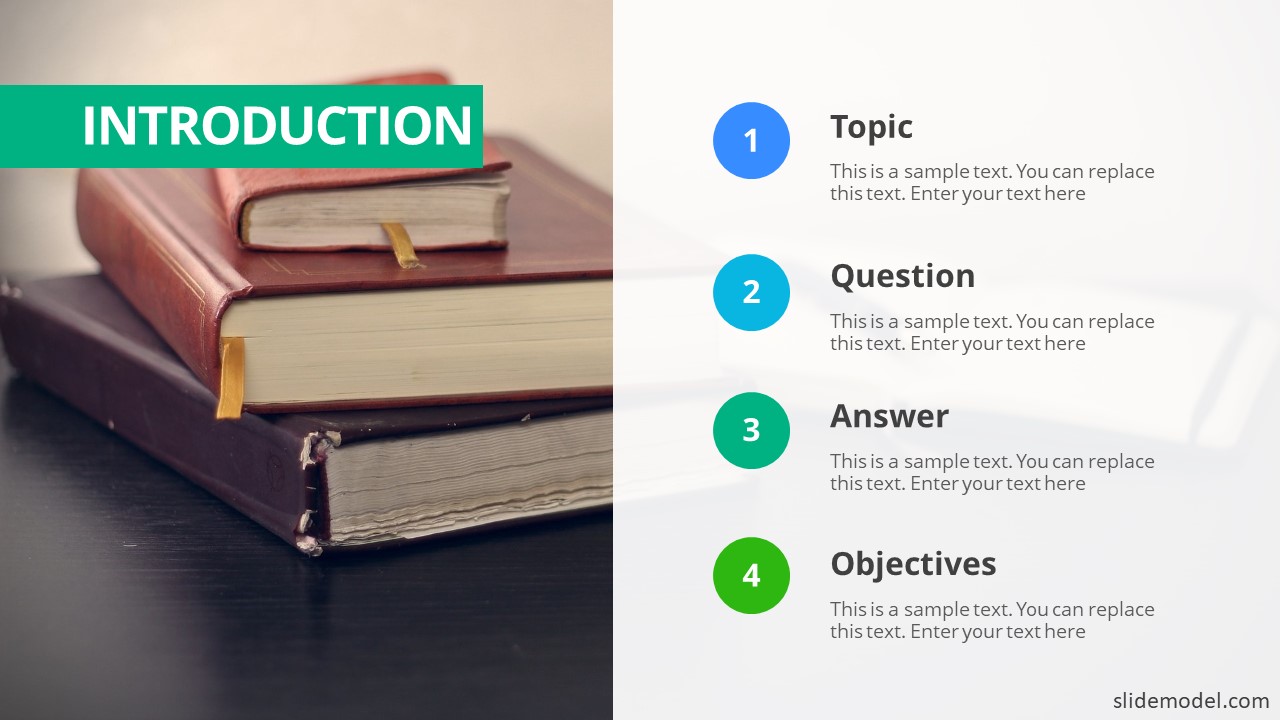
- What is the topic area that you are investigating ?
- What are the specific research questions that you set out to answer?
- Why is this question important to answer?
- What were the objectives of your research?

3. Literature Review Slide
It’s not necessary to cover everything that’s currently understood in the available literature. You may want to present the following content under a Literature Review slide:
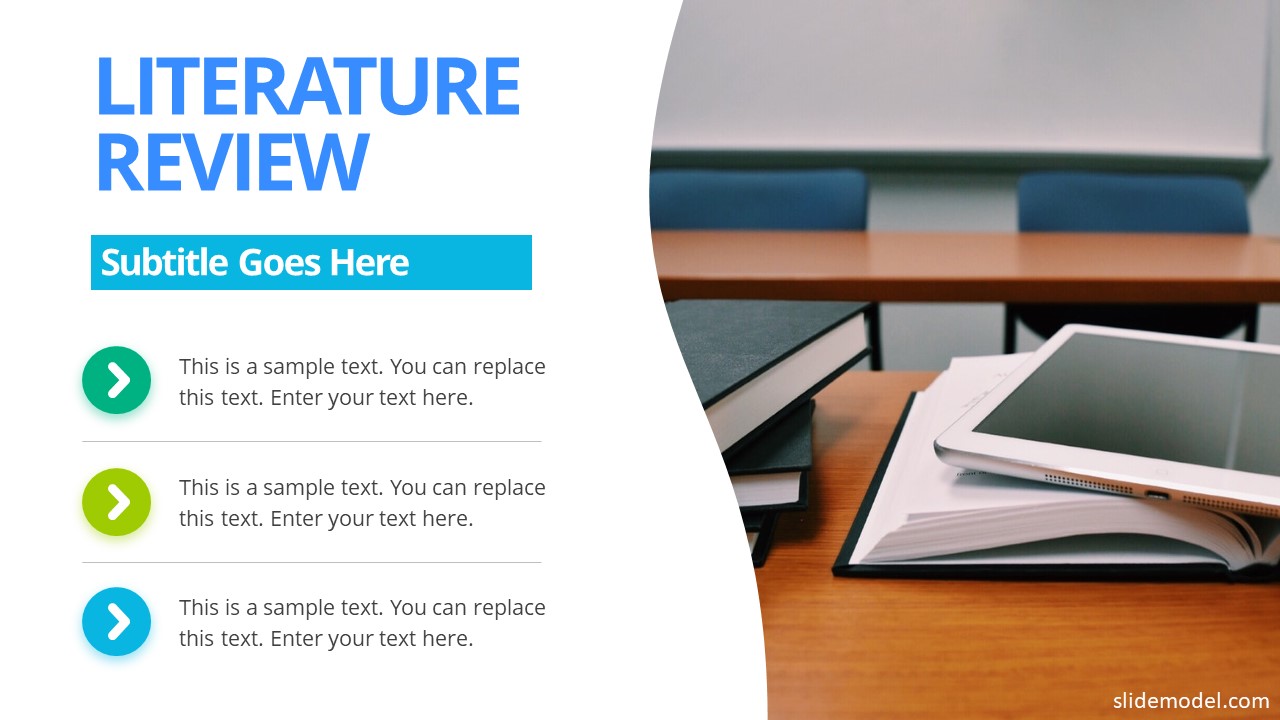
- Relevant current research that is close to your topic
- Different theories that may apply to your specific area of research
- Areas of weakness that are currently highlighted
4. Methodology Slide
Make sure to touch the factors below within your process, and include the following in the Methodology slide:

- The type of study you have conducted: qualitative, quantitative, or mixed
- The methods that you chose and why
- Details of the population, sampling methods, and other information
- Provide information regarding how you have analyzed the data that you have collected
5. Results Slide
This part should give the committee/audience a good understanding of what you’ve discovered during your research. The statistics & results slide could include the final results of your analysis, here is an example:

- An overall description of the data that you collected during your research
- The results of the analysis that you have done on that data
- What were the most significant findings from your data
6. Discussion Slide
Highlight here the meaning of the findings in relation to your discipline program and the research that you have done:
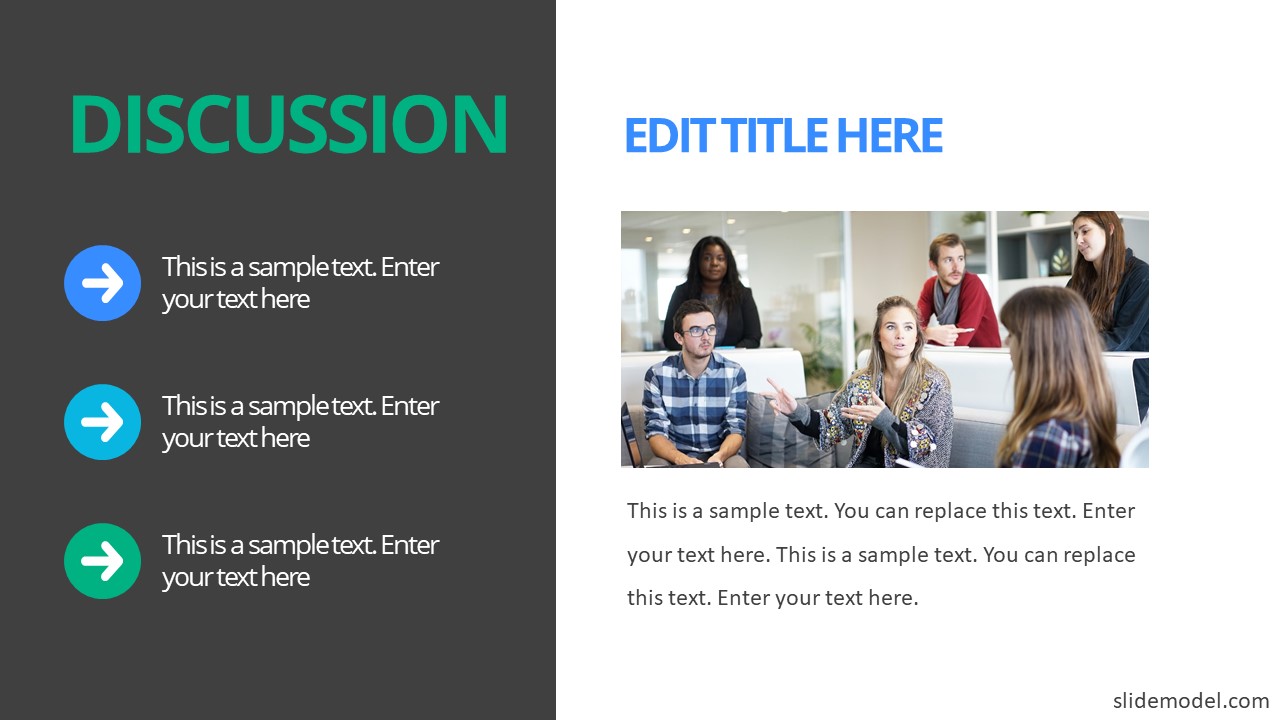
- What are the major findings, and what do they mean with regard to your research
- How do these findings relate to what others have found in the past
- How can you explain any unusual or surprising result
7. Conclusions Slide
You have to end your presentation with a conclusion summarizing all that you have found within your research. Here is an example of a Conclusion slide in a Thesis presentation:

- Restate your research questions
- Show how your results answer these questions
- Show what contribution you have made
- State any limitations to the work you have done
- Suggest future research
- Make any recommendations
See Also: How to Create a Great Investors Pitch Deck and Close the Deal
8. Acknowledgements Slide
Express gratitude to your advisor, committee members, peers, and others who supported your research journey. This slide provides a moment to acknowledge the collaborative nature of academic work.
9. Questions and Answers Slide
Dedicate a slide for audience questions at the end of your presentation.
Encourage engagement by inviting questions from the audience.
Be prepared to provide clear and concise responses to inquiries.
10. References Slide
Include a slide listing your cited sources throughout your presentation.
Use a consistent citation style (APA, MLA, Chicago, etc.).
The References slide demonstrates your thorough engagement with existing literature.
11. Contact Information Slide
If you’re open to further inquiries or collaborations, consider adding your contact information.
Include your email address or relevant professional social media handles.
How to use SlideModel AI Presentation Maker for your Thesis Presentation
If you want to save hours of manual time, you can leverage AI tools to make your thesis presentation. The best part of integrating AI tools into our workflow is that we can pair them to get even better results than we expected. With SlideModel’s AI presentation maker , users can create an entire slide deck by introducing these variables:
- Topic of your thesis
- Number of slides to include in your thesis presentation
- Outline checkup
And that’s it! Download the AI-generated presentation in PPTX format or for Google Slides, and edit it if you require adding some extra content. The core elements are already done, and you can save countless hours of hard work.
Tips During Your Oral Defense!
Review your materials.
Even if you already feel confident with your upcoming presentation, you still need to review your materials.
You can bring the hard copy of your thesis with you during the defense, but you don’t want to get lost in your presentation when you forget some specific details and have to scan your papers.
You should know your paper in and out.
Rehearse Your Presentation
It’s not wrong if it sounds like a script when you speak in your oral defense. It’s expected and understandable.
You need to practice your presentation, especially when there’s a time restriction given to every presenter.
You only need to prepare enough slides that would fit your time limit. A hundred slides aren’t suitable for a 15 to 20-minute presentation, nor 10 slides for an hour of defense.
Your rehearsal will be more effective if you practice it in front of an audience.
Note: You will experience complete silence in the defense room. You might feel awkward because, most of the time, you’re the only one speaking out loud. This is completely fine, and it’s something you should practice in rehearsal should you be afraid.
Narrow the Presentation of Ideas
Regarding your slides, you don’t have to include everything that’s in your paper. You should narrow down your ideas to the main points and the most important details, such as the statistics and findings.
If the members of your committee think you lack details or they want to hear a further explanation, they won’t hesitate to ask you.
Prepare for the Unexpected Questions
The panel tends to challenge the presenters, usually through some hard questions.
Its aim is how well do you you have done your research and how prepared you are.
But as long as you know the ins and outs of your paper, you shouldn’t lose your confidence regardless of which questions they ask.
Just keep in mind that what you’re saying in your oral defense is not in conflict with what is written on the hard copy you provided them.
What To Do When You Don’t Know the Answer
If the committee asks you a question and you don’t know the answer, don’t make up a baseless answer.
Baseless means out-of-context answers or something without proof or backup.
How To Deal With The Nervousness
The committee expects you to be nervous. Of course, it’s normal.
However, one effect of being nervous is the changes in your behavior.
There’s a tendency for you’ll talk fast, which will make it hard for the committee to understand you.
It might also cause you to have a mental block.
So try to slow down. Take a deep breath.
Inhale, exhale. Remember to breathe!
It’s OK to pause, and it’s OK to take your time; it’s more important that the committee clearly understands what you are trying to articulate.
More Quick Tips on How to Present!
- Introduce yourself at the beginning
- Introduce the title of the presentation
- Don’t read your notes if possible
- Don’t speak too fast
- Put an emphasis on what you’re saying so you don’t sound monotonous
- Look at your adviser once in a while for possible signs
- Stand on the right of the white screen if you are right-handed so you can easily refer to the slide without giving your back to the committee
- Face the audience when you talk
- Keep an eye contact
- Make sure to keep attention to the reactions of the committee and don’t forget to react in turn
We hope you enjoyed this article on how to do a proper thesis defense and how to best prepare for one using proven tips and techniques to help you get through this. Hopefully, after your defense, you will be set as the one in your class to deliver an inspiring graduation speech for your peers. If you have value, please remember to share this article. We also recommend you read these Thesis Statement Examples for inspiration to create your own professionally.
1. MasterDoc PowerPoint Template

Creating a Thesis presentation should be a straight forward task; based on your thesis document and following the tips described above you have a high level structure already outlined. The MasterDoc PowerPoint template provides professional layouts with texts and image placeholders; so you can create document like slides using your thesis defense as your content. This template is ideal for a highly detailed documents, where visuals and words unite to illustrate one concept per page. The result is an asset that can be read and digested more quickly than either your thesis document or a presentation created for assisting a speech. A document created with the MasterDoc PowerPoint templates is meant to be printed or distributed, read on screen without the accompaniment of a presenter or used in an e-learning platform as pure learning content.
Use This Template
2. Thesis Presentation PowerPoint Template
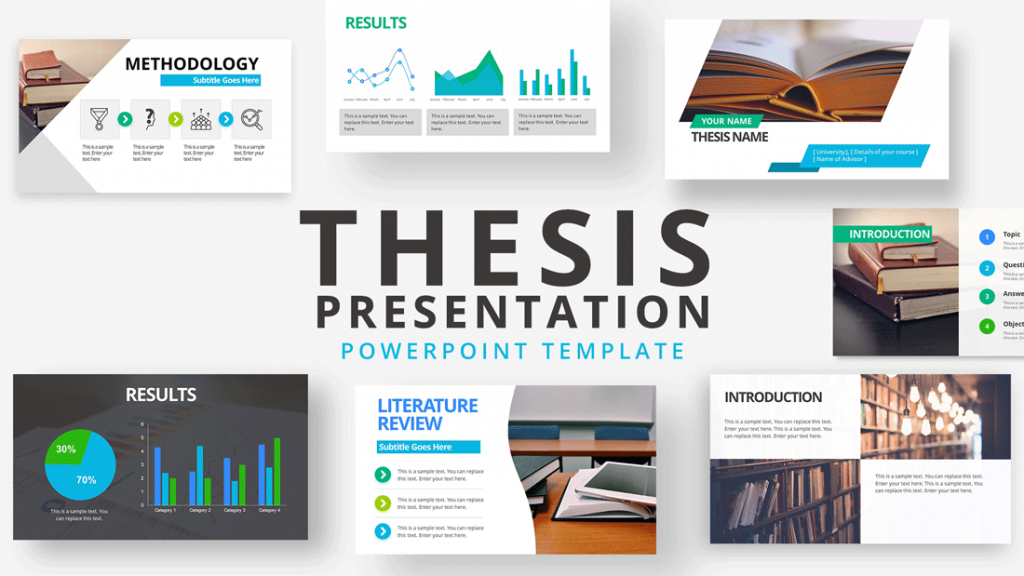
You had invested a considerable time researching, testing hypothesis and confirming your thesis. Craft your thesis presentation with the same level of detail you applied in your work. Using the Thesis Presentation PowerPoint Template you will focus only in your content and your message. The layouts, images,design and structure will be taken care by the template.
3. Master Thesis PowerPoint Template

The Master Thesis PowerPoint Template is a professional document designed for postgraduate degrees presentations. It provides simple sections that follow the structure and best practices of traditional research thesis presentations. Starting with the introduction to the theory and state of the art scenario; following with hypothesis research and its findings and concluding with the confirmation or negation of the initial thesis statement.
4. Essay Outline PowerPoint Template

Your thesis defense can be accompanied by an essay, that states your thesis and argues about it using several supporting paragraphs. This kind of document is ideal to be an intermediate step between reading assisting to the thesis presentation and reading the complete thesis documentation. It has more information that your thesis defense abstract, but does summarizes the supporting evidence and examples that allows the argument of each idea behind the thesis. You can use the Essay Outline Template to present your Essay outline and create an essay linked to your thesis defense documentation.
Like this article? Please share
Academics, Degree, Dissertation, Doctorate, Education, Faculty, Master, PhD, Student, Thesis Filed under Presentation Ideas
Related Articles
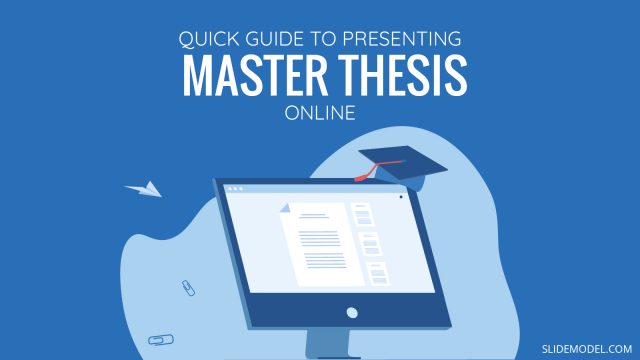
Filed under Education • June 19th, 2024
A Quick Guide to Presenting an Online Master’s Thesis
A Master thesis is one of the most important career times, and can be the make it or break it of years of study. Learn more in this article on how to make it amazing.
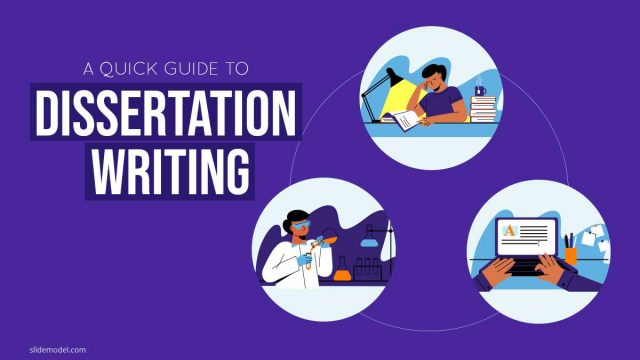
Filed under Education • June 4th, 2024
A Quick Guide to Dissertation Writing
This articles provides a summarized guide answering the main questions professionals have when writing their dissertation. You will learn the basic structure and its content. You can download assets for your dissertation presentation.

Filed under PowerPoint Tutorials • May 22nd, 2024
How to Cite a PowerPoint in APA
Learn how to correctly apply the APA style in your presentations by learning how to cite slides, books and images in APA in PowerPoint.
36 Responses to “How To Do a Proper Thesis Defense Using the Right PowerPoint Presentation”
Great job! This has made my thesis presentation a whole lot easier.
Excellent !!!!!
Now I feel I’m quite confident on how to do my dissertation presentation properly and how to defend it. I will share that with other friends and colleagues.
Thank you so much for your kind help.
Best regards, Awad
Thank you for such a valuable guide.
it was very helpful
Thanks a bunch for the general summary for thesis defense with all related information that we might have to know. Great job!
Great tips.
i have proposal defense in two days and im so nervous right now! reading this is helpful in some ways thankyou!
It’s very helpful and understandable. Easy steps to follow.
I found it very helpful to refresh and make my self ready for my defense!
Thank you a lot this article. It’s really helpful!
Naveen Kumar S: Thank you its very Helpful. I appreciate all your effort this is very useful.
Very important and interesting so go on thank you
I really like it. In the near future I am going to present for the MA thesis. Therefore, it will guide me a lot. If you can please attach with this email the detail.
I do like the article as it proves to be valuable and worthy. I enjoyed reading every single note. It helped me feel at ease and have confidence when my viva day takes place. THANK YOU SO MUCH.
Appreciate your Assistance
Thanks a lot for the gist
Thank you so much, I got full information and knowledge.
This has made me look forward to my thesis defense. Thanks a lot
Very useful
thank you very much for your best information
Thank you very much the article is full of knowledge on Thesis as well as dissertation defense. Big Up!
I am appreciative. Well informative and educative.
Thanks immensely for these wonderful tips on presentation during defense. I personally found more useful to me as I prepare to defend my Master Dissertation.
Thank you very much! I now feel more confident.
Thanks for your good self overall usability of the Participations motivated points and contribute significantly in thesis defense practices. Best wishes to one and All
Happy To Help.
Thank you very much. As I am pursuing for my PhD in Leadership, I got it so meaningful and worth having.
Your tips on What a Thesis and Dissertation are, are on point. I have fully understood their differences and similarities. I have also noted the killer way of summaring a Power Point Presentation. Slidemodel.com…you are just a force to reckon with. I need more information…in case you have models you can share with me and those interested in this subject covered.
Thanks a million times for your timely guidance. Just preparing to do my PhD Thesis defense.
this was very, very helpful…Thank you!
Highly appreciate your effort to deliver what a student is looking for. I find your article really helpful and to the point. Thanks !
Regarding to my P.P, I’ve understood so many issues from this. Thankyou!
i got it as it is so important for my deffence presentation, thanky you very much
This Material was very hopeful and encourage any student who prepare any presentation relation with thesis. It also combined more encauragable and it enhance presentation!
Thought provoking content Thank you.
Great comments. very helpful
Leave a Reply

PhD Dissertation Defense Slides Design: Start
- Tips for designing the slides
- Presentation checklist
- Example slides
- Additional Resources
Purpose of the Guide
This guide was created to help ph.d. students in engineering fields to design dissertation defense presentations. the guide provides 1) tips on how to effectively communicate research, and 2) full presentation examples from ph.d. graduates. the tips on designing effective slides are not restricted to dissertation defense presentations; they can be used in designing other types of presentations such as conference talks, qualification and proposal exams, and technical seminars., the tips and examples are used to help students to design effective presentation. the technical contents in all examples are subject to copyright, please do not replicate. , if you need help in designing your presentation, please contact julie chen ([email protected]) for individual consultation. .
- Example Slides Repository
- Defense slides examples Link to examples dissertation defense slides.
Useful Links
- CIT Thesis and dissertation standards
- Dissertations and Theses @ Carnegie Mellon This link opens in a new window Covers 1920-present. Full text of some dissertations may be available 1997-present. Citations and abstracts of dissertations and theses CMU graduate students have published through UMI Dissertation Publishing. In addition to citations and abstracts, the service provides free access to 24 page previews and the full text in PDF format, when available. In most cases, this will be works published in 1997 forward.
- Communicate your research data Data visualization is very important in communicating your data effectively. Check out these do's and don'ts for designing figures.
Power Point Template and other Resources
- CEE Powerpoint Slide Presentation Template 1
- CEE Powerpoint Slide Presentation Template 2
Source: CEE Department Resources https://www.cmu.edu/cee/resources/index.html
- CMU Powerpoint Slide Template
Source: CMU Marketing and Communications
https://www.cmu.edu/marcom/brand-standards/downloads/index.html
- Use of CMU logos, marks, and Unitmarks
Email me for questions and schedule an appointment

Top 7 tips for your defense presentation
1. show why your study is important, remember, your audience is your committee members, researchers in other fields, and even the general public. you want to convince all of them why you deserve a ph.d. degree. you need to talk about why your study is important to the world. in the engineering field, you also need to talk about how your study is useful. try to discuss why current practice is problematic or not good enough, what needs to be solved, and what the potential benefits will be. , see how dr. posen and dr. malings explained the importance of their studies..
- Carl Malings Defense Slides with Notes
- I. Daniel Posen Defense Slides with Notes
2. Emphasize YOUR contribution
Having a ph.d. means that you have made some novel contributions to the grand field. this is about you and your research. you need to keep emphasizing your contributions throughout your presentation. after talking about what needs to be solved, try to focus on emphasizing the novelty of your work. what problems can be solved using your research outcomes what breakthroughs have you made to the field why are your methods and outcomes outstanding you need to incorporate answers to these questions in your presentation. , be clear what your contributions are in the introduction section; separate what was done by others and what was done by you. , 3. connect your projects into a whole piece of work, you might have been doing multiple projects that are not strongly connected. to figure out how to connect them into a whole piece, use visualizations such as flow charts to convince your audience. the two slides below are two examples. in the first slide, which was presented in the introduction section, the presenter used a flow diagram to show the connection between the three projects. in the second slide, the presenter used key figures and a unique color for each project to show the connection..

- Xiaoju Chen Defense Slides with Notes
4. Tell a good story
The committee members do not necessarily have the same background knowledge as you. plus, there could be researchers from other fields and even the general public in the room. you want to make sure all of your audience can understand as much as possible. focus on the big picture rather than technical details; make sure you use simple language to explain your methods and results. your committee has read your dissertation before your defense, but others have not. , dr. cook and dr. velibeyoglu did a good job explaining their research to everyone. the introduction sessions in their presentations are well designed for this purpose. .
- Laren M. Cook Defense Slides with Notes
- Irem Velibeyoglu Defense with Notes
5. Transition, transition, transition
Use transition slides to connect projects , it's a long presentation with different research projects. you want to use some sort of transition to remind your audience what you have been talking about and what is next. you may use a slide that is designed for this purpose throughout your presentation. , below are two examples. these slides were presented after the introduction section. the presenters used the same slides and highlighted the items for project one to indicate that they were moving on to the first project. throughout the presentation, they used these slides and highlighted different sections to indicate how these projects fit into the whole dissertation. .

You can also use some other indications on your slides, but remember not to make your slides too busy. Below are two examples. In the first example, the presenter used chapter numbers to indicate what he was talking about. In the second example, the presenter used a progress bar with keywords for each chapter as the indicator.

Use transition sentences to connect slides
Remember transition sentences are also important; use them to summarize what you have said and tell your audience what they will expect next. if you keep forgetting the transition sentence, write a note on your presentation. you can either write down a full sentence of what you want to say or some keywords., 6. be brief, put details in backup slides , you won't have time to explain all of the details. if your defense presentation is scheduled for 45 minutes, you can only spend around 10 minutes for each project - that's shorter than a normal research conference presentation focus on the big picture and leave details behind. you can put the details in your backup slides, so you might find them useful when your committee (and other members of the audience) ask questions regarding these details., 7. show your presentation to your advisor and colleagues, make sure to ask your advisor(s) for their comments. they might have a different view on what should be emphasized and what should be elaborated. , you also want to practice at least once in front of your colleagues. they can be your lab mates, people who work in your research group, and/or your friends. they do not have to be experts in your field. ask them to give you some feedback - their comments can be extremely helpful to improve your presentation. , below are some other tips and resources to design your defense presentation. .
- Tips for designing your defense presentation
How important is your presentation, and cookies?

- Next: Tips for designing the slides >>
- Last Updated: Jan 9, 2024 11:18 AM
- URL: https://guides.library.cmu.edu/c.php?g=883178
Reference management. Clean and simple.
How to prepare an excellent thesis defense
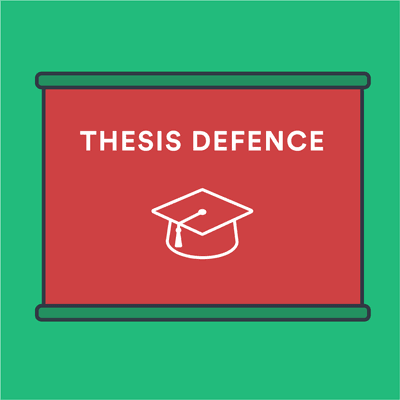
What is a thesis defense?
How long is a thesis defense, what happens at a thesis defense, your presentation, questions from the committee, 6 tips to help you prepare for your thesis defense, 1. anticipate questions and prepare for them, 2. dress for success, 3. ask for help, as needed, 4. have a backup plan, 5. prepare for the possibility that you might not know an answer, 6. de-stress before, during, and after, frequently asked questions about preparing an excellent thesis defense, related articles.
If you're about to complete, or have ever completed a graduate degree, you have most likely come across the term "thesis defense." In many countries, to finish a graduate degree, you have to write a thesis .
A thesis is a large paper, or multi-chapter work, based on a topic relating to your field of study.
Once you hand in your thesis, you will be assigned a date to defend your work. Your thesis defense meeting usually consists of you and a committee of two or more professors working in your program. It may also include other people, like professionals from other colleges or those who are working in your field.
During your thesis defense, you will be asked questions about your work. The main purpose of your thesis defense is for the committee to make sure that you actually understand your field and focus area.
The questions are usually open-ended and require the student to think critically about their work. By the time of your thesis defense, your paper has already been evaluated. The questions asked are not designed so that you actually have to aggressively "defend" your work; often, your thesis defense is more of a formality required so that you can get your degree.
- Check with your department about requirements and timing.
- Re-read your thesis.
- Anticipate questions and prepare for them.
- Create a back-up plan to deal with technology hiccups.
- Plan de-stressing activities both before, and after, your defense.
How long your oral thesis defense is depends largely on the institution and requirements of your degree. It is best to consult your department or institution about this. In general, a thesis defense may take only 20 minutes, but it may also take two hours or more. The length also depends on how much time is allocated to the presentation and questioning part.
Tip: Check with your department or institution as soon as possible to determine the approved length for a thesis defense.
First of all, be aware that a thesis defense varies from country to country. This is just a general overview, but a thesis defense can take many different formats. Some are closed, others are public defenses. Some take place with two committee members, some with more examiners.
The same goes for the length of your thesis defense, as mentioned above. The most important first step for you is to clarify with your department what the structure of your thesis defense will look like. In general, your thesis defense will include:
- your presentation of around 20-30 minutes
- questions from the committee
- questions from the audience (if the defense is public and the department allows it)
You might have to give a presentation, often with Powerpoint, Google slides, or Keynote slides. Make sure to prepare an appropriate amount of slides. A general rule is to use about 10 slides for a 20-minute presentation.
But that also depends on your specific topic and the way you present. The good news is that there will be plenty of time ahead of your thesis defense to prepare your slides and practice your presentation alone and in front of friends or family.
Tip: Practice delivering your thesis presentation in front of family, friends, or colleagues.
You can prepare your slides by using information from your thesis' first chapter (the overview of your thesis) as a framework or outline. Substantive information in your thesis should correspond with your slides.
Make sure your slides are of good quality— both in terms of the integrity of the information and the appearance. If you need more help with how to prepare your presentation slides, both the ASQ Higher Education Brief and James Hayton have good guidelines on the topic.
The committee will ask questions about your work after you finish your presentation. The questions will most likely be about the core content of your thesis, such as what you learned from the study you conducted. They may also ask you to summarize certain findings and to discuss how your work will contribute to the existing body of knowledge.
Tip: Read your entire thesis in preparation of the questions, so you have a refreshed perspective on your work.
While you are preparing, you can create a list of possible questions and try to answer them. You can foresee many of the questions you will get by simply spending some time rereading your thesis.
Here are a few tips on how to prepare for your thesis defense:
You can absolutely prepare for most of the questions you will be asked. Read through your thesis and while you're reading it, create a list of possible questions. In addition, since you will know who will be on the committee, look at the academic expertise of the committee members. In what areas would they most likely be focused?
If possible, sit at other thesis defenses with these committee members to get a feel for how they ask and what they ask. As a graduate student, you should generally be adept at anticipating test questions, so use this advantage to gather as much information as possible before your thesis defense meeting.
Your thesis defense is a formal event, often the entire department or university is invited to participate. It signals a critical rite of passage for graduate students and faculty who have supported them throughout a long and challenging process.
While most universities don't have specific rules on how to dress for that event, do regard it with dignity and respect. This one might be a no-brainer, but know that you should dress as if you were on a job interview or delivering a paper at a conference.
It might help you deal with your stress before your thesis defense to entrust someone with the smaller but important responsibilities of your defense well ahead of schedule. This trusted person could be responsible for:
- preparing the room of the day of defense
- setting up equipment for the presentation
- preparing and distributing handouts
Technology is unpredictable. Life is too. There are no guarantees that your Powerpoint presentation will work at all or look the way it is supposed to on the big screen. We've all been there. Make sure to have a plan B for these situations. Handouts can help when technology fails, and an additional clean shirt can save the day if you have a spill.
One of the scariest aspects of the defense is the possibility of being asked a question you can't answer. While you can prepare for some questions, you can never know exactly what the committee will ask.
There will always be gaps in your knowledge. But your thesis defense is not about being perfect and knowing everything, it's about how you deal with challenging situations. You are not expected to know everything.
James Hayton writes on his blog that examiners will sometimes even ask questions they don't know the answer to, out of curiosity, or because they want to see how you think. While it is ok sometimes to just say "I don't know", he advises to try something like "I don't know, but I would think [...] because of x and y, but you would need to do [...] in order to find out.” This shows that you have the ability to think as an academic.
You will be nervous. But your examiners will expect you to be nervous. Being well prepared can help minimize your stress, but do know that your examiners have seen this many times before and are willing to help, by repeating questions, for example. Dora Farkas at finishyourthesis.com notes that it’s a myth that thesis committees are out to get you.
Two common symptoms of being nervous are talking really fast and nervous laughs. Try to slow yourself down and take a deep breath. Remember what feels like hours to you are just a few seconds in real life.
- Try meditational breathing right before your defense.
- Get plenty of exercise and sleep in the weeks prior to your defense.
- Have your clothes or other items you need ready to go the night before.
- During your defense, allow yourself to process each question before answering.
- Go to dinner with friends and family, or to a fun activity like mini-golf, after your defense.
Allow yourself to process each question, respond to it, and stop talking once you have responded. While a smile can often help dissolve a difficult situation, remember that nervous laughs can be irritating for your audience.
We all make mistakes and your thesis defense will not be perfect. However, careful preparation, mindfulness, and confidence can help you feel less stressful both before, and during, your defense.
Finally, consider planning something fun that you can look forward to after your defense.
It is completely normal to be nervous. Being well prepared can help minimize your stress, but do know that your examiners have seen this many times before and are willing to help, by repeating questions for example if needed. Slow yourself down, and take a deep breath.
Your thesis defense is not about being perfect and knowing everything, it's about how you deal with challenging situations. James Hayton writes on his blog that it is ok sometimes to just say "I don't know", but he advises to try something like "I don't know, but I would think [...] because of x and y, you would need to do [...] in order to find out".
Your Powerpoint presentation can get stuck or not look the way it is supposed to do on the big screen. It can happen and your supervisors know it. In general, handouts can always save the day when technology fails.
- Dress for success.
- Ask for help setting up.
- Have a backup plan (in case technology fails you).
- Deal with your nerves.

Like what you're reading?
How to create a great thesis defense presentation: everything you need to know
Get your team on prezi – watch this on demand video.
Anete Ezera April 13, 2024
Ready to take on your thesis defense presentation? It’s not just about wrapping up years of study; it’s your moment to share your insights and the impact of your work. A standout presentation can make all the difference. It’s your chance to highlight the essentials and really connect with your audience.
This is where Prezi comes into play. Forget about flipping through slide after slide. With Prezi, you craft a narrative that pulls your audience in. It simplifies the complex, ensuring your key points hit home. Let’s explore how Prezi can help transform your thesis defense into a successful presentation.

What is a thesis defense presentation and why are they needed?
Whether you’re preparing for a master’s thesis defense or a Ph.D. thesis defense, this final step in your academic journey is the one with the most significance, as it dramatically influences your final grade. It’s also your chance to display the dedication and effort you’ve put into your research, a way to demonstrate how significant your work is.
So, why is this such a big deal? A good presentation helps convince your teachers that your research is solid and makes a difference in your field. It’s your time to answer questions, show that your research methods were sound, and point out what’s new and interesting about your work. In the end, a great thesis defense presentation helps you finish strong and makes sure you leave a lasting impression as you wrap up this chapter of your academic life.
Best practices for making a successful thesis defense presentation
In order to craft a standout thesis defense presentation, you need to do more than just deliver research findings. Here are some key strategies to ensure success, and how Prezi can play a crucial role in elevating your presentation.
Start with a strong introduction
Kick-off with an engaging introduction that lays out your research question, its significance, and your objectives. This initial segment grabs attention and sets the tone. Using Prezi’s zoom feature can make your introduction pop by visually underscoring key points, helping your audience grasp the importance of your work right from the start.
Organize your presentation clearly
A coherent structure is essential for guiding your audience through your thesis defense presentation. Prezi can help by offering a map view of your content’s layout upfront, providing a clear path through your introduction, methodology, results, and conclusion. This clarity keeps your audience engaged and makes your arguments easier to follow.
Incorporate multimedia elements
Adding multimedia elements like videos, audio clips, and animations can greatly improve the appeal of your thesis defense presentation. Prezi supports the seamless integration of these elements, allowing you to bring your research to life in a more vibrant and engaging way. Videos can serve as powerful testimonials or demonstrations, while animations can help illustrate complex processes or changes over time. This variety keeps your audience engaged and helps convey your message in a more exciting way.

Simplify complex data
Your findings need to be presented in a way that’s easy for your audience to understand. Prezi shines here, with tools that transform intricate data into clear, engaging visuals. By implementing charts and graphs into your presentation, you can make your data stand out and support your narrative effectively.
Engage your audience
Make your thesis defense a two-way conversation by interacting with your audience. Whether it’s through questions, feedback, or direct participation, engagement is key. Prezi allows for a flexible presentation style, letting you navigate sections in response to audience input, creating a dynamic and engaging experience.
Highlight key takeaways
Emphasize the key takeaways of your research throughout your presentation to ensure your audience grasps the most critical aspects of your work. With Prezi, you can use spotlighting and strategic zooming to draw attention to these takeaways, making them stand out. This method helps reinforce your main points, ensuring they stick with your audience long after your presentation concludes. By clearly defining what your audience should remember, you guide their understanding and appreciation of your research’s value and implications.
Practice makes perfect
Confidence in delivery comes from thorough practice. Familiarize yourself with every aspect of your thesis defense presentation, including timing, voice control, and gestures. Prezi Video is a great tool for rehearsing, as it allows you to blend your presentation materials with your on-camera performance, mirroring the live defense setting and helping you polish your delivery.

End with a lasting impression
Conclude your presentation powerfully by summarizing your main findings, their implications, and future research directions. Prezi’s ability to zoom out and show the big picture at your conclusion helps reinforce how each section of your presentation contributes to your overall thesis, ensuring your research leaves a memorable impact on your audience.
By using these tips and taking advantage of what Prezi offers, you can make your thesis defense presentation really stand out. It’ll not only hit the mark with your audience but also clearly show why your research matters.
Meeting tight deadlines with Prezi
Facing a looming deadline for your thesis defense presentation? Prezi offers smart solutions to help you create a polished and engaging presentation quickly, even if it feels like you’re down to the wire.
A closer look at Prezi AI features
Prezi AI is a standout feature for those pressed for time. It assists in structuring your presentation efficiently, suggesting design elements and layouts that elevate your content. This AI-driven approach means you can develop a presentation that looks meticulously planned and executed in a fraction of the time it would normally take. The result? A presentation that communicates the depth and value of your research clearly and effectively, without the last-minute rush being evident. Here’s what Prezi AI can do:
- Streamlined creation process: At the core of Prezi’s efficiency is the AI presentation creator . Perfect for those last-minute crunch times, it’s designed to tackle tight deadlines with ease.
- Easy start: Kick off your presentation creation with just a click on the “Create with AI” button. Prezi AI guides you through a smooth process, transforming your initial ideas or keywords into a structured and visually appealing narrative.
- Visual impact: There’s no need to dive deep into design details. Simply provide some basic input, and Prezi AI will craft it into a presentation that grabs and holds your audience’s attention, making your thesis defense visually compelling.
- AI text editing: Spending too much time fine-tuning your message? Prezi AI text editing features can help. Whether you need to expand on a concept, clarify complex terms, or condense your content without losing impact, Prezi AI streamlines these tasks.
- Content refinement: Adjust text length for deeper explanation, simplify language for better understanding, and ensure your presentation’s content is precise and to the point. Prezi AI editing tools help you refine your message quickly, so you can focus on the essence of your research.
Using Prezi Video for remote thesis defense presentations
For remote thesis defenses, Prezi Video steps up to ensure your presentation stands out. It integrates your on-screen presence alongside your presentation content, creating a more personal and engaging experience for your audience. This is crucial in maintaining attention and interest, particularly in a virtual format where keeping your audience engaged presents additional challenges. Prezi Video makes it seem as though you’re presenting live alongside your slides, helping to simulate the in-person defense experience and keep your audience focused on what you’re saying.

Using these advanced Prezi features, you can overcome tight deadlines with confidence, ensuring your thesis defense presentation is both impactful and memorable, no matter the time constraints.
The Prezi experience: what users have to say
Prezi users have shared compelling insights on how the platform’s unique features have revolutionized their presentations. Here’s how their experiences can inspire your thesis defense presentation:
Storytelling with Prezi
Javier Schwersensky highlights the narrative power of Prezi: “This is a tool that is going to put you ahead of other people and make you look professional and make your ideas stand out,” he remarks. For your thesis defense, this means Prezi can help you craft a narrative that not only presents your research but tells a story that captures and retains the committee’s interest.
Flexibility and creativity
Tamara Montag-Smit appreciates Prezi for its “functionality of the presentation that allows you to present in a nonlinear manner.” This flexibility is key in a thesis defense, allowing you to adapt your presentation flow in real time based on your audience’s engagement or questions, ensuring a more dynamic and interactive defense.
The open canvas
Vitek Dočekal values Prezi’s open canvas , which offers “creative freedom” and the ability to “create a mind map and determine how to best present my ideas.” For your thesis defense, this means Prezi lets you lay out and show off your work in a way that makes sense and grabs your audience’s attention, turning complicated details into something easy and interesting to follow.
Engagement and retention
Adam Rose points out the engagement benefits of Prezi: “Being able to integrate videos is extremely effective in capturing their attention.” When you need to defend a thesis, using Prezi to include videos or interactive content can help keep your committee engaged, making your presentation much more memorable.
These real insights show just how effective Prezi is for crafting truly influential presentations. By incorporating Prezi into your thesis defense presentation, you can create a defense that not only shows how strong your research is but also leaves a lasting impression on your audience.
Thesis defense presentations for inspiration
Prezi is much more than a platform for making presentations; it’s a place where you can find inspiration by browsing presentations that other Prezi users have made. Not only that, but Prezi offers numerous templates that would be useful for thesis defense presentations, making the design process much easier. Here are a few examples that you may find helpful:
Research project template by Prezi
This Prezi research project template stands out as an ideal choice for thesis defense presentations due to its well-structured format that facilitates storytelling from start to finish. It begins with a clear introduction and problem statement, setting a solid foundation for the narrative. The inclusion of sections for user research, interviews, demographics, and statistics allows for a detailed presentation of the research process and findings, which are crucial when defending a thesis.
Visual elements like user mapping and journey maps help make complex information understandable and engaging, which is crucial for maintaining the committee’s attention. Additionally, addressing pain points and presenting prototypes showcases problem-solving efforts and practical applications of the research. The template culminates in a conclusion that ties everything together, emphasizing the research’s impact and future possibilities. Its comprehensive yet concise structure makes it an excellent tool for communicating the depth and significance of your work in a thesis defense.
Civil rights movement Prezi
This Prezi on the Civil Rights Movement exemplifies an effective thesis defense presentation by seamlessly blending structured content, multimedia enhancements, and dynamic navigation. It organizes information into coherent sections like “About,” “Key Events,” and “Key People,” offering a comprehensive view ideal for a thesis presentation. The strategic use of videos adds depth, providing historical context in a dynamic way that text alone cannot, enhancing the audience’s engagement and understanding.
Furthermore, Prezi’s open canvas feature brings the narrative to life, allowing for a fluid journey through the Civil Rights Movement. This method of presentation, with its zooming and panning across a virtual canvas, not only captivates but also helps to clarify the connections between various elements of the research, showcasing how to effectively communicate complex ideas in a thesis defense.
AI-assisted history template
This AI-assisted presentation template stands out as a great choice for thesis defense presentations, especially for those rooted in historical research. By merging striking visuals with rich, informative content, you can use this template to craft a narrative that breathes life into past events, guiding the audience on an engaging journey through time. Its sequential storytelling approach, empowered by Prezi AI , ensures a smooth transition from one historical point to the next, demonstrating the depth and continuity of your research. This template showcases Prezi AI’s capability to enhance narrative flow. By integrating advanced visuals and text, it captivates audiences and makes it an invaluable tool for presenting complex historical theses in a clear, compelling way.
Master your final grade with a Prezi thesis defense presentation
Preparing for a thesis defense, whether for a master’s or Ph.D., is a pivotal moment that significantly influences your final grade. It’s your platform to demonstrate the dedication behind your research and its importance in your field. A well-executed presentation convinces your educators of your research’s validity and your ability to bring fresh perspectives to light.
To craft a successful thesis defense presentation, Prezi’s innovative features can be a game-changer. Prezi can empower you to transform presentations into captivating stories and provide you with the flexibility and creative freedom needed to make your presentation an outstanding success. Incorporating videos or utilizing Prezi’s non-linear presentation style can keep your committee engaged and emphasize your research’s significance.
Prezi also serves as a hub of inspiration, offering templates perfect for thesis defenses. From structured research project templates to dynamic historical narratives, Prezi provides tools that communicate your thesis’s depth and significance effectively, ensuring you leave a memorable impact on your audience. So, it’s time to revamp your thesis defense presentation and change it from dull to inspirational with Prezi.

Give your team the tools they need to engage
Like what you’re reading join the mailing list..
- Prezi for Teams
- Top Presentations

IMAGES
VIDEO
COMMENTS
Just like most presentations, your thesis defense presentation should include an introduction slide. This slide should have the topic of your thesis and the question that your presentation answers. It should also include any objections to your research and the answer you’ll be defending in your thesis presentation.
This article presents 15 sample speeches for thesis defense introductions. Each example offers a unique approach, catering to different styles, subjects, and presentation lengths. Whether you prefer a brief and punchy opener or a more detailed introduction, you’ll find inspiration to help you craft the perfect start to your thesis defense.
To present your thesis information in a clear, concise, and ultimately amazing way, you can use one of our unique thesis defense templates, available at Slidesgo. As an example, in this article, we are going to use the Ecology Thesis template .
A thesis defense demands time, commitment, and effort to get right. But it’s not just what you present that matters — it’s how you present it, too. A great design is crucial, and to help you get started, here are seven presentation tips to keep in mind.
A thesis defense, also known as a viva voce or oral defense, is an academic event where a student presents their research work and findings to a panel of experts in their field. It typically marks the culmination of their graduate studies, especially at the master's or doctoral level.
In today’s article, we will be giving you The Right PowerPoint Templates for Your Thesis Defense and a powerful outline composed of best practices and layouts specifically designed to help you defend your thesis in both written and oral presentations.
This Guide was created to help Ph.D. students in engineering fields to design dissertation defense presentations. The Guide provides 1) tips on how to effectively communicate research, and 2) full presentation examples from Ph.D. graduates.
What is a thesis defense and how do you prepare for it the best way? This guide discusses what a thesis defense is and offers 6 tips for how to prepare.
This Prezi research project template stands out as an ideal choice for thesis defense presentations due to its well-structured format that facilitates storytelling from start to finish. It begins with a clear introduction and problem statement, setting a solid foundation for the narrative.
several things that must be done before a thesis defense can occur. Most importantly, you must meet with your advisory committee to ensure that everyone agrees that the work is ready to defend.